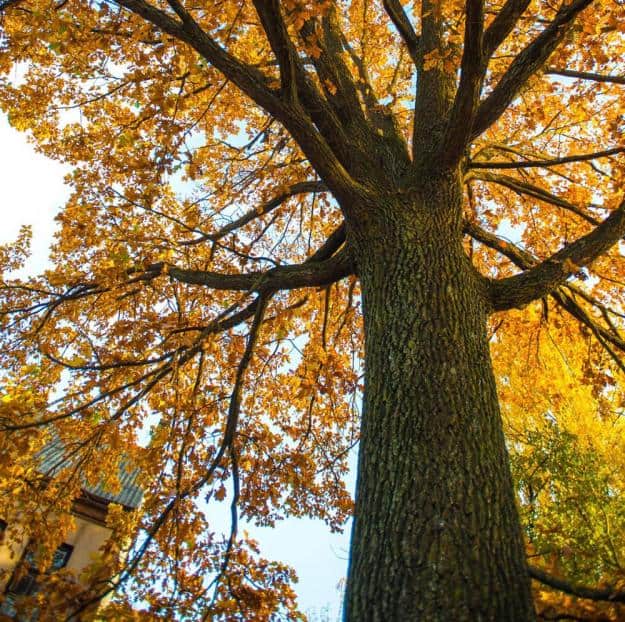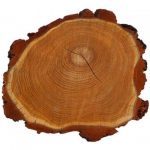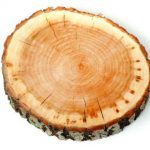Wood Science: An Introduction
If you have been a woodworker long enough, you’ve probably come across an uncooperative piece of wood that won’t stay flat, pinches on your saw blade or stains unevenly. You may also have had the pleasure of working a beautiful piece of fiddleback maple or walnut burl. These problematic and beautiful pieces of wood share one simple fact — they both come from trees.
Trees didn’t evolve to please or frustrate woodworkers. Their structure serves only the tree itself. The beauty and pleasure we get from working with wood doesn’t concern the tree. Put another way, wood is a natural product. That’s why it’s important for woodworkers to understand how trees grow and how their internal structure determines our working relationship with this beautiful and natural product.
Normal Cross Section
With fairly typical growing conditions, trees have a pith close to the center of the tree. The pith is the first layer of material the tree builds as it grows taller. There is also an outer band of lighter-coloured cells, called sapwood, that bring sap up to the crown of the tree. The darker cells towards the center of the tree are called heartwood. The bark of the tree is shown on the outer perimeter.
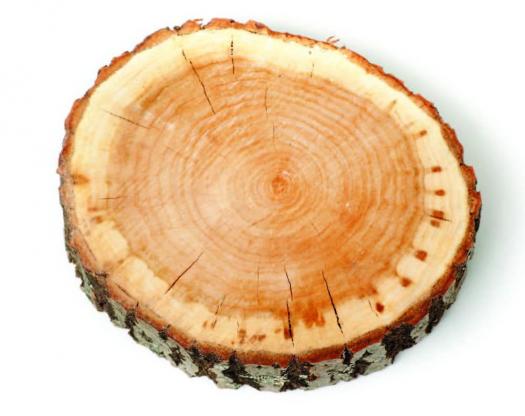
Reaction Wood
A number of unique growing conditions can cause a tree to build more cells (both sapwood and heartwood) on one side of its trunk. This causes the pith to be well off center, and results in what is called ‘reaction wood’, which reacts differently when machined by a woodworker.
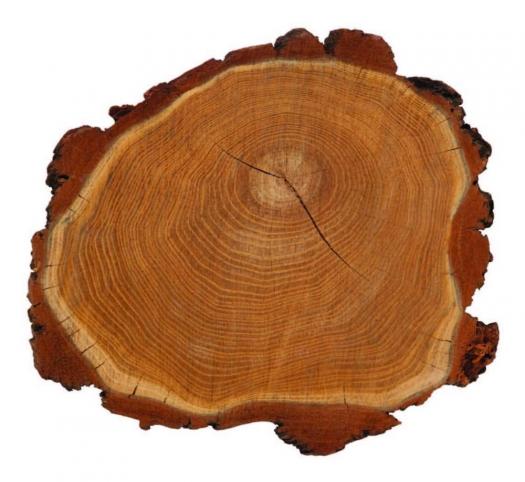
Start in the middle
Most people are familiar with the basics of tree anatomy. All trees have a root system to anchor the tree and absorb nutrients and water from the soil. Above the roots is the trunk of the tree, which in turn supports the crown which contains all of the leaves. We’re going to concern ourselves with the mid zone — the trunk — as that’s the portion of the tree where lumber comes from.
The best way to examine the trunk is to look at a cross section. What you will see is an easily recognized bark layer on the outer circumference enclosing the trunk. The trunk is made up of wood usually with many growth rings and a center pith representing the early juvenile period of growth. Beneath the bark is a very thin layer of living material called the cambium, and this is where growth takes place.
The tree grows when cells of the cambium divide. Those on the inside produce the area called the sapwood which conducts sap from the roots upward (in the spring). Those cells on the outside of the cambium layer are used to conduct nutrients from the crown downward (in the fall). Eventually, these outer cells form the bark as new growth occurs. Growth in most trees is cyclical. There is a dormant period (winter) followed by a period of growth. This produces the familiar growth rings visible in most species.
Fantastic figure
The bulk of the trunk is made up of wood. If you look closely, you may see individual cells. The cells in the trunk are organized vertically and this produces the major grain direction of the wood. Reading grain for the woodworker is the ability to recognize the direction that these longitudinal cells grow. Knowing how to read the grain will tell you which direction to plane or machine a piece of wood to minimize tear-out. Also, when the direction of growth deviates from the vertical, the wonderful phenomenon known as figure results. Fiddleback, ribbon, mottled and quilt are some of the figures produced by an errant grain direction.
In a perfect world, a tree grows straight up with little deviation from vertical. Straight trees will have a cross section with a perfectly centered pith. Yearly growth rings will show a consistent width no matter which part of the trunk you examine. But trees rarely grow straight. They can tilt, bow and rotate as the trunk reacts to different growing conditions. This will affect the quality of the lumber these trees produce.
Reaction wood
While most trees have a pith located fairly close to the center of the cross section of a tree, that’s not always the case. For a number of reasons, some trees have an off-centered pith, as well as uneven growth rings. The tree is essentially putting more growth on one side to help support the tree as it grows upwards towards the sun’s light. This type of growth produces reaction wood.
Reaction wood is typically denser than the wood in the rest of the trunk, even compared to wood in the same growth ring. It is unstable, warps and moves unpredictably. It tends to ‘fuzz’ when being machined and will also blotch when stained. Woodworkers should examine the end grain of lumber when purchasing. Lumber with an off-center pith and uneven growth rings off to one side are visual clues that reaction wood is present and should be avoided.
It’s important for woodworkers to learn how to read the grain. Whether examining a cross section of a log or the end grain of a piece of lumber, the tree will give us important visual clues as to how it grew before it was cut down. Trees will give up their secrets and with that knowledge we can bring out the beauty and potential of any piece of wood.
Next time, we will return to our standard tree cross section and examine the variations that occur in the sapwood and the heartwood. These areas of the tree are important to the woodworker as they also have stories to tell through their colour, figure and workability.
Peter Mac Sween - pjmacsween@sympatico.ca
Peter's woodworking journey began with a career in carpentry followed by a decade buying and selling veneer. His spare time is spent abusing his guitars and exploring the great outdoors.

